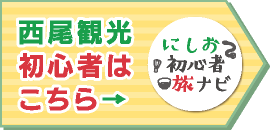Soybean Miso Cuisine
What is Soybean Miso (mame miso)?
It is a miso with a strong umami made with a fermentation starter (mame koji) that is created by steaming soybeans and allowing them to ferment with water and table salt.
Aichi prefecture is the chief producer of soybean miso producing Hatcho-miso and Nagoya-miso among others. They are classified as ‘red miso.’
Soybean miso dishes such as miso katsu and miso nikomi udon are popular not only with Japanese people but also with people from overseas.
The oldest remaining record of soybean miso dates to the year 730 and is a quintessential ingredient rooted in Aichi prefecture’s history, culture and topography.
According to one theory (by Hisao Nagayama, a food culture history researcher) soybean miso was the ingredient that most likely supported the health and strength of the local military commanders during the Warring States period and gave rise to the “Three Unifiers of Japan” (San-Eiketsu) who ruled Japan.
There are records of Nobunaga Oda eating grilled miso porridge (yaki-miso yuzuke) before going into battle and Hideyoshi Toyotomi taking “miso balls” as a packed meal into battles. As well as Ieyasu Tokugawa eating grilled miso riceballs (yaki-miso onigiri.) It seems that miso soup was also part of their regular diet.
Soybean Miso Dishes
 Miso-Katsu
Miso-KatsuMiso-katsu is a breaded fried pork cutlet covered in a sauce made of soybean miso (such as Hatcho-miso,) bonito broth, and sugar.
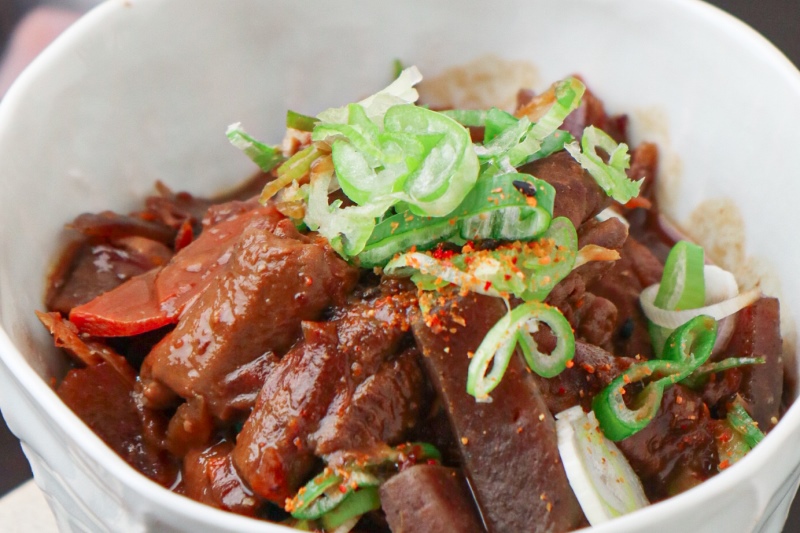 Dote-Yaki
Dote-YakiDote-yaki is beef tendons simmered for a long time in soybean miso and mirin. Also know as dote-ni or dote.
 Miso Nikomi Udon
Miso Nikomi UdonMiso nikomi udon is a noodle dish of udon simmered in a soybean-miso-based broth.
 Miso Oden
Miso OdenMiso oden’s ingredients are simmered in a sweet Hatcho-miso-based broth.
There is also miso-dengaku (simmered dengaku to be precise) where the ingredients are not boiled in a broth but in water and then topped with miso.
 Miso-Dengaku
Miso-DengakuMiso-dengaku is a dish where tofu, taro and such are skewered, grilled, and then smeared with a soybean miso, that has been combined with sugar, mirin, and fragranced with yuzu and Japanese pepper leaves.
 Furofuki-Daikon
Furofuki-DaikonFurofuki-daikon is a thick slice of white radish boiled and eaten with a sauce made of soybean miso combined with mirin and sugar.
 Gohei-mochi
Gohei-mochiGohei-mochi is a regional dish that comes from the mountainous area of the Chubu region. It is coarsely pounded rice (non-glutinous) coated in a sweet miso sauce with sesame seeds and peanuts and grilled on a skewer.
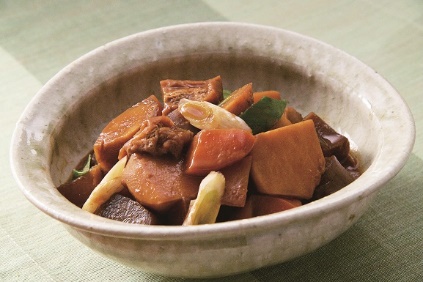 Ni-Miso
Ni-MisoNi-miso is a simmered dish in which many kinds of ingredients are simmered in miso. Some places serve it in a miso soup or as a hot pot. Common features are using root vegetables and making a large quantity at one time.
Soybean Miso Popular Among Families
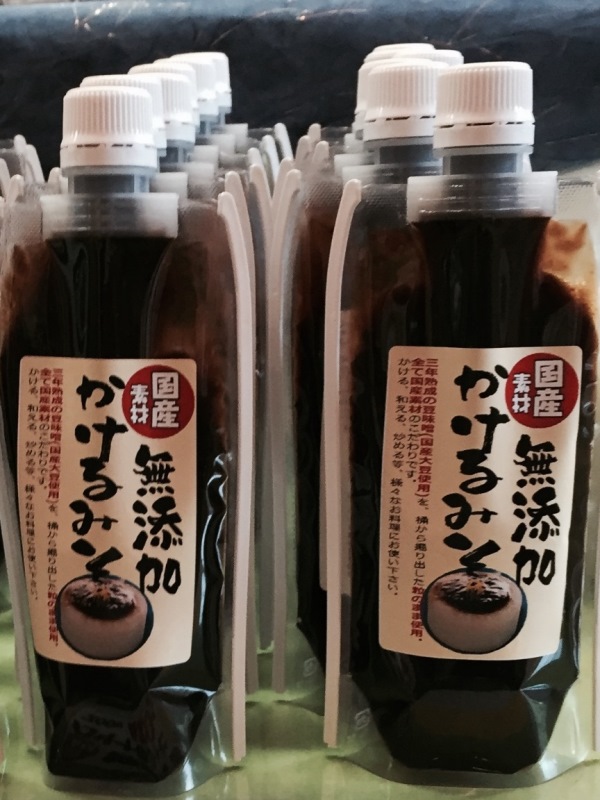
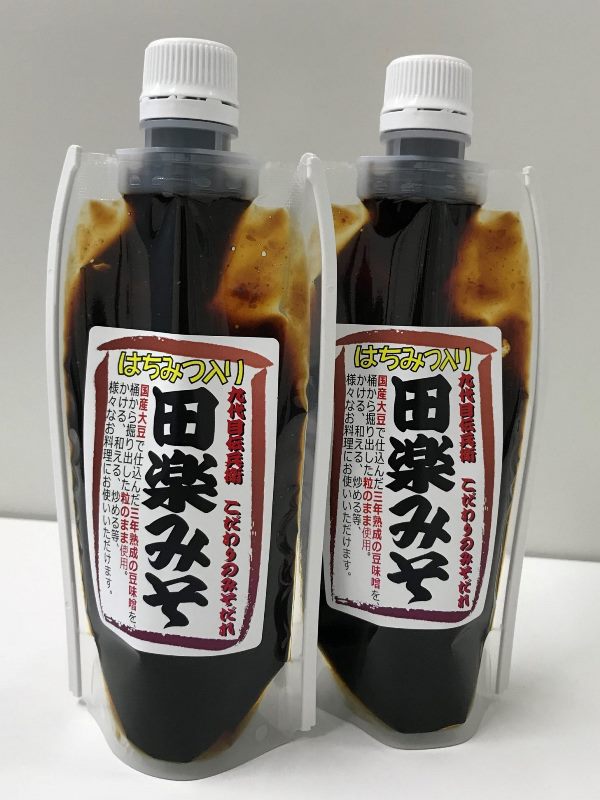
- It is common practice for Aichi residents to use red miso (soybean miso) at home.
In Nishio at Hatoya you can find Kakeru Miso. It uses Japanese soybeans that have been fermented for three years; a coarse soybean miso is then dug out of a wooden vat to create Kakeru Miso.
This product can be used as a sauce, a dressing, or in stir-fries. It can be used in a variety of dishes. The Dengaku Miso with honey is also popular.
